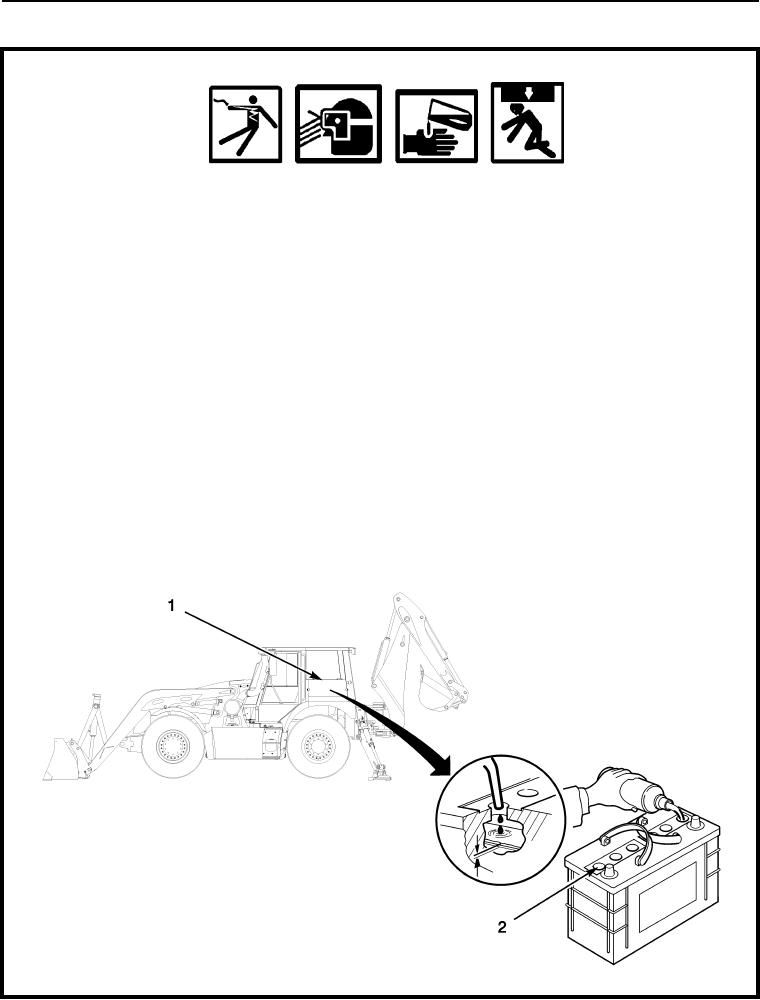
TM 5-2420-232-10
0017
Table 5. Lubrication Instructions - Continued.
Note 13.
Batteries Electrolyte Level Check (If Equipped)
WARNING
To avoid injury, eye protection and acid-resistant gloves must be worn when working around
batteries. Do not smoke, use open flame, make sparks, or create other ignition sources around
batteries. If a battery is giving off gases, it can explode and cause injury or death to personnel.
Remove all jewelry such as rings, ID tags, watches, and bracelets. If jewelry or a tool contacts a
battery terminal, a direct short will result in instant heating, damage to equipment, and injury to
personnel.
Sulfuric acid contained in batteries can cause serious burns. If battery corrosion or electrolyte
makes contact with skin, eyes, or clothing, take immediate action to stop the corrosive burning
effects. Failure to follow these warnings may result in injury or death to personnel.
NOTE
For complete information on servicing batteries, refer to TM 9-6140-200-14.
Perform service to all batteries.
Maintenance-free batteries used in normal temperate climate applications should not need topping off. However, in certain
conditions (such as prolonged operation at tropical temperatures or if the alternator overcharges), the electrolyte level should
be checked as described below:
1. Open the battery box lid (1).
2. Remove the cell covers (2).
3. Check the electrolyte level in each cell. The electrolyte should be 1/4 in. (6 mm) above the plates. Notify Field Mainte-
nance if level is low.
4. Install the cell covers (2). Close and secure the battery box lid (1).
435-A0350
Figure 20. Batteries Electrolyte Level
017
Change 1
0017-46

